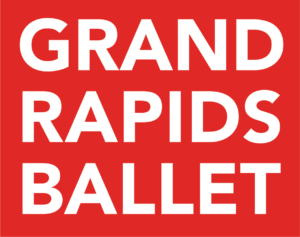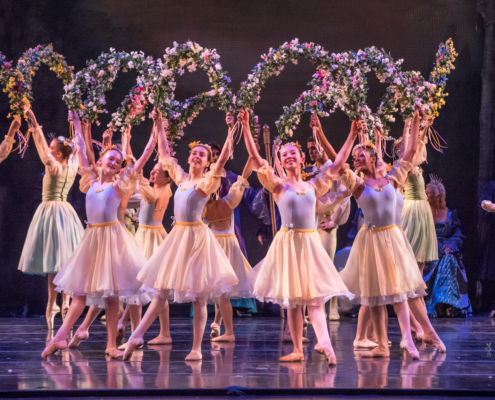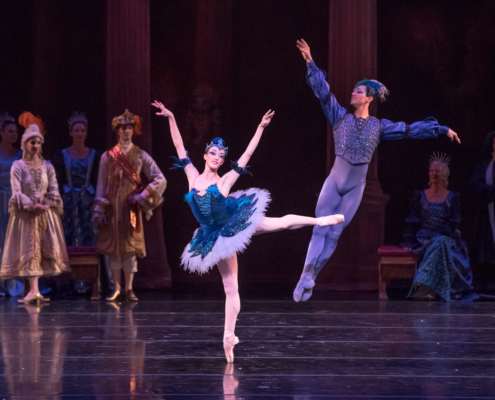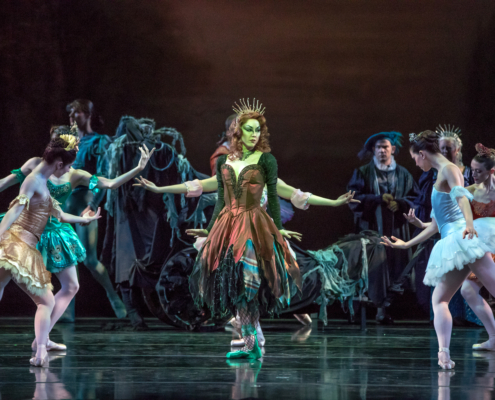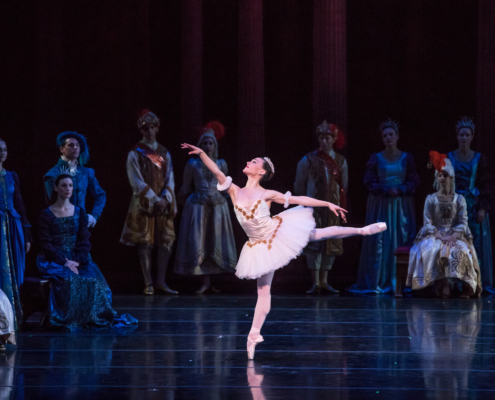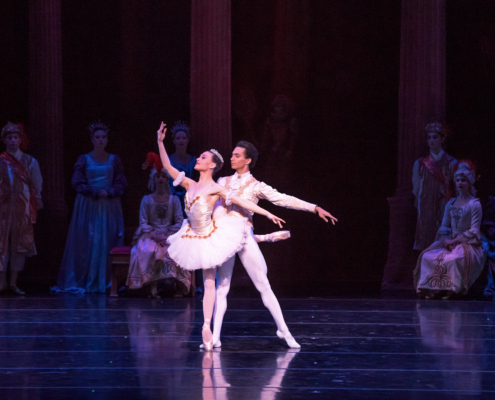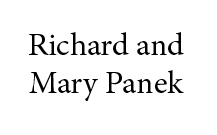SLEEPING BEAUTY
February 23-25, 2024 at DeVos Performance Hall
Be whisked away by one of the most beloved classical ballets as this fairytale commands the stage at DeVos Performance Hall. With elegant choreography created by Devon Carney, with sections after Marius Petipa and Tchaikovsky’s exceptional score performed live by the Grand Rapids Symphony, this timeless production follows the traditional tale of Princess Aurora and the curse placed on her and her kingdom by the evil fairy Carabosse, the benevolent Lilac Fairy, and Prince Désiré who can awaken her from the spell only with true love’s kiss. With gorgeous costumes, sumptuous sets, and breathtaking dancing, this family-friendly performance will surely sweep you away in the beauty of classical ballet. This production will also feature Grand Rapids Ballet School students alongside the professional company’s dancers.
SLEEPING BEAUTY | DATES & TIMES
Friday, February 23, 2024
- Evening performance at 7:30 p.m. | Get Tickets
Saturday, February 24, 2024
- Matinee performance at 2 p.m. | Get Tickets
Sunday, February 25, 2024
- Matinee performance at 2 p.m. | Get Tickets
SLEEPING BEAUTY | SNEAK PEEK
SLEEPING BEAUTY | CREATORS

Devon Carney
Biography
Devon Carney, Artistic Director of Kansas City Ballet, was born in New Orleans, where he began his dance training with Harvey Hysell. He later joined the New Orleans Ballet, where he danced his first leading roles. In 1978, Mr. Carney was invited to join Boston Ballet. While a corps de ballet member, Mr. Carney was chosen by Choo San Goh to dance the title role of Romeo in Goh’s first and only full-length ballet, Romeo and Juliet. Mr. Carney was promoted to principal in 1986.
During his 21-year professional dance career, Mr. Carney was able to perform many leading roles in well-known classical ballets such as Giselle, Swan Lake, Don Quixote, The Sleeping Beauty, and Raymonda Act III. Mr. Carney had the opportunity also to perform leading roles in 20th-century classical works such as John Cranko’s Eugene Onegin and Taming of the Shrew, Ben Stevenson’s Cinderella, Bruce Wells’ A Midsummer Night’s Dream, Harald Lander’s Etudes, and Anthony Tudor’s Lilac Garden. He also was able to dance roles choreographed by cutting-edge choreographers. These roles include Maurice Bejart’s Le Sacre du Printemps, Paul Taylor’s Company B, Merce Cunningham’s Breakers, Sir Frederick Ashton’s Monotones 1, Mark Morris’ Mort Subite, and Susan Marshall’s Overture. His George Balanchine repertoire includes principal roles in Square Dance, Agon, Mozartiana, Rubies, The Four Temperaments, and Theme and Variations among others.
Mr. Carney has toured extensively throughout Europe, the United States, Mexico, and Asia with such greats as Rudolph Nureyev, Fernando Bujones, and Cynthia Gregory. In 1994, Mr. Carney was the non-competing partner of the Senior Division Bronze Medalist at the Jackson International Ballet Competition.
Mr. Carney served as Ballet Master for Boston Ballet from 1998 to 2003. During this time he worked closely with choreographers Ben Stevenson, Christopher Wheeldon, Michael Corder, Michael Pink, and Bruce Wells. Furthermore, he has worked closely with Anna-Marie Holmes in the staging of several major productions of the great classics.
Mr. Carney was appointed Artistic Director of the Boston Ballet Summer Dance Program in 1994 and served in this capacity for nine years. Teaching credits include Alvin Ailey Dance Theatre, Arizona Ballet Summer Program, Ballet Austin, Boston Ballet, BalletMet, Cincinnati Ballet, Guangzhou Ballet of China, Hartford Ballet, Houston Ballet Summer Program, Pittsburgh Ballet Theatre, University of North Carolina School for the Arts, Texas Christian University, Boston Conservatory, Butler University, University of Cincinnati College Conservatory of Music Dance Department and various regional ballet companies and schools across the United States and Europe. He also has served as a judge on the juries of the 2002 Youth America Grand Prix Ballet Competition finals in New York City and the 2005 and 2006 American Ballet Competition, as well as the semi-finals of YAGP in 2018.
In addition, his choreographic endeavors include the ballets Opus II and Interlude for Boston Ballet, Cascades, and Daystar for Boston Ballet II. Through the years, he choreographed Symphony #1, Awakenings, and Wonderful Land for the Boston Ballet Summer Dance Program, as well as staged several classical ballet excerpts. He choreographed a work for BalletMet in August of 2007 titled Speaking In Tongues. He also worked very closely with the Cincinnati Opera from 2005-2012 choreographing works in Aida, Un Ballo in Maschera, Lucie de Lammermoor, Die Meistersinger, La Traviata, and many others. In addition, Mr. Carney has choreographed several ballets for Cincinnati Ballet including U Too?, Just You and Me, Another Time Another Space, Blue Rondo, and in September of 2007 Convergent Sight. Also, in February of 2006, Mr. Carney choreographed Acts 2 and 4 of the full-length Swan Lake for Cincinnati Ballet. Then, in November of 2006, he choreographed his full-length version of Giselle for Cincinnati Ballet to rave reviews. Also, he presented his full-length world premiere of Dracula in October of 2008 and then subsequently choreographed his world premiere of World Citizen in March of 2009 with a review stating, “Carney’s work is not only well crafted but moody and intense with a palpable sense of loneliness. His work grows more confident and more skillful with every piece he creates” (David Lyman, Cincinnati Enquirer).
Mr. Carney was with the Cincinnati Ballet from 2003 to 2013, serving as the Associate Artistic Director. He worked closely with choreographers such as Donald Byrd, Lynn Taylor Corbett, Jorma Elo, Victor Kabanieav, Trey McIntyre, Donald McKayle, Darrell Grand Moultrie, Kirk Peterson, Viktor Plotnikov, and many others during this time.
He recently created a new version of the full-length version of the world-renowned Sleeping Beauty to great critical acclaim. In addition, he choreographed in the spring of 2011 a world premiere, Thrive On Here, set to the live music of the nationally known hit group Over the Rhine. In the summer of 2011, Mr. Carney again had the opportunity to choreograph for the Cincinnati Opera for the recently written opera A Flowering Tree by John Adams. In the Spring of 2012, he choreographed a world premiere version of the Hans Christian Anderson story of The Steadfast Tin Soldier. In the spring of 2013, he had the opportunity to choreograph two works back to back for Cincinnati Ballet. The first was Concerto #4 in March of 2013. The second, which closed the 2012–2013 season, was Boot It Up! This was performed with the live musical accompaniment of rock-and-roll legend Peter Frampton and his entire band and was hailed as a tremendous high point in the Cincinnati performing arts scene for the season.
Devon Carney was appointed Artistic Director of Kansas City Ballet starting with the 2013–2014 season. Upon arrival, he created his first work for the company, titled Opus I. Additionally, in 2014, he choreographed for Lyric Opera of Kansas City’s productions of Die Fledermaus and La Traviata. In 2015, Kansas City Ballet presented his critically-acclaimed version of Giselle. Also in 2015, Kansas City Ballet debuted his newly-choreographed rendition of the timeless classic, The Nutcracker, with stellar reviews including: “The rebuilt and re-imagined “Nutcracker” … is, among other things, a visually mesmerizing spectacle that will fill viewers’ heads with indelible images.” (Robert Trussell, The Kansas City Star). This success was immediately followed in 2016 with his staging of the world-renowned classical masterpiece, Swan Lake. One review stated: “In Kansas City Ballet’s first-ever presentation of “Swan Lake,” artistic director Devon Carney’s relentless enthusiasm and vision seems to have finally manifested—the performance Friday indicated a company capable of anything.” (Libby Hansen, The Kansas City Star). In 2017, audiences enjoyed for the first time his The Sleeping Beauty and his world premiere choreography of Romeo & Juliet. The 2017-2018 season closed with Mr. Carney’s world premiere choreography of Peter Pan. Additionally, his The Nutcracker has been performed at the Kennedy Center for the Performing Arts in 2017 and 2022.
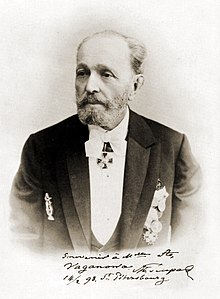
Marius Petipa
Biography
Marius Petipa, the “father of classical ballet,” was born in Marseilles, France, in 1819. He began his dance training at the age of seven with his father, Jean Petipa, the French dancer and teacher. Marius was educated at the Grand College in Brussels and also attended the conservatoire, where he studied music. Although he disliked dancing in those early years, his progress was so great that he made his debut in 1831 in his father’s production of Gardel’s La Dansomanie.
In 1834 Jean Petipa became Maitre de Ballet at the theatre in Bordeaux and it was here that Marius completed his education. At the age of sixteen, he became premier danseur at the theatre in Nantes, where he also produced several short ballets.
In 1839 Marius left Nantes to tour North America with his father, and on their return visit went to Paris. The following year he made his debut at the Comedie Francaise, where he partnered Carlotte Grisi in a benefit performance. He continued his studies with A. Vestris and became a principal dancer in Bordeaux.
Petipa next went to Spain in 1845, to work at the King’s Theatre. While in Madrid, he studied Spanish dance and choreographed Carmen et son Terero, La Perle de Seville, L’Aventure d’une fille de Madrid, La Fleur de Grenade, and Depart Dour la Course des Toureaux.
Petipa returned to Paris as a principal dancer, but in 1847 left for Russia. He had signed a one-year contract with the St. Petersburg Imperial Theatre, but was to remain there for the rest of his life. As a principal dancer, Petipa often appeared with Fanny Elssler and was much acclaimed for his performances in such ballets as Paquita (which he restaged and in which made his debut), Giselle, La Peri, Armida, Catarina, Le Delire d’un peintre, Esmeralda, Le Corsaire and Faust. Considered an excellent dancer and partner, his acting, stage manners and pantomime were held up as examples for many generations of dancers.
When Giselle was revived in 1850, Petipa made some changes in the Wilis scenes, which became the Grand Pas des Wilis of 1884. In 1854, he married Maria Sourovshchikova, a student in the graduating class of the Imperial School, who later danced in many of her husband’s ballets. (Petipa’s second marriage was to Lubova Leonidovna, a member of the Moscow Ballet, in 1882.) In 1854 he became an instructor in the school, while continuing to dance and to restage ballets from the French repertoire.
Sources differ on the first original work he staged for the Imperial Theatre: some state it was The Star of Granada, others that it was A Marriage During Regency. But all sources concur that his first great success was The Daughter of Pharoh (staged in six weeks), which resulted in his appointment as Choreographer-in-Chief in 1862 — a position he held for nearly fifty years.
In 1869 Petipa became Premier Ballet Master of the Imperial Theatre. The value of his accomplishments is inestimable: he produced more than sixty full-evening ballets and innumerable shorter works and he is considered to have laid the foundation for the entire school of Russian ballet. The ballet repertoire in the Soviet Union is still based mainly on his works.
Those who felt the dramatic content of ballet should be strengthened began to oppose Petipa toward the end of his career. His noble classicism and consciousness of form was considered old-fashioned, and in 1903, at age 84, Petipa was forced to retire from the Imperial Theatre as a direct result of the failure of his ballet, The Magic Mirror. His last years were filled with bitterness and disillusionment because his beloved theatre had been taken away. He died in St. Petersburg in 1910.
Marius Petipa is considered one of the greatest choreographers of all time. He researched the subject matter of the ballets he staged, making careful and detailed preparations for each production, and then worked closely with the designer and composer. Petipa elevated the Russian ballet to international fame and laid the cornerstone for 20th Century ballet. His classicism integrated the purity of the French school with Italian virtuosity.
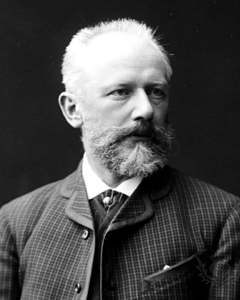
Peter Tchaikovsky
Biography
Peter (Pyotr) Ilyich Tchaikovsky (1840-1893) was a Russian composer whose works included symphonies, concertos, operas, ballets, and chamber music. Tchaikovsky was born on May 7th, 1840 in Votkinsk, a small town in the Russian Empire. He displayed exceptional musical ability from an early age, improvising at the piano and composing his first song in 1844, aged four. Tchaikovsky persuaded his father that music was his future and he began composition lessons with Anton Rubinstein in 1861. Between 1871 and 1876 he produced a series of great works, including Swan Lake (1876) and the First Piano Concerto (1875), which established him as Russia’s leading composer. By 1887, he was conducting his own music to great acclaim and producing such works as the Sixth Symphony, the ‘Pathetique’ in 1893 (the year of his death), and the ballets The Sleeping Beauty (1890) and The Nutcracker (1892).
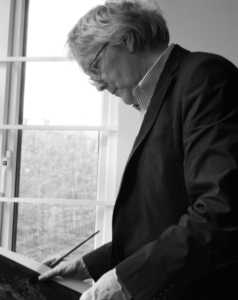
Peter Farmer
Biography
Peter Farmer has designed for most of the major ballet companies in the world, including The Royal Ballet, London Festival Ballet, London Contemporary Dance Theatre, Houston Ballet, London City Ballet, Sadler’s Wells Royal Ballet, the Royal Danish Ballet, the Rome and Cologne Opera Houses, Stuttgart Ballet, the Royal Winnipeg Ballet, New London Ballet, Ballet Rambert, Scottish Ballet, Northern Ballet Theatre, the Dutch National Ballet, the Washington Ballet, and Chicago City Ballet.
Farmer’s work includes designs for The Sleeping Beauty for the Munich Opera House, Anna Karenina and The Three Musketeers for The Australian Ballet, Giselle for Texas and Rio de Janeiro, Swan Lake for the Royal Winnipeg Ballet and Hong Kong Ballet, The Great Gatsby for Pittsburgh Ballet Theatre, The Nutcracker for Cincinnati Ballet Company, Les Sylphides for the Teatro Municipal, Rio de Janeiro, A Midsummer Night’s Dream for the Hirofumi Inoue Ballet de Chambre in Tokyo and Balanchine’s Theme and Variations and Divertimento No. 15 for Sadler’s Wells (now Birmingham) Royal Ballet. He designed Anna Karenina for the Ballet de Santiago Chile and for the Norwegian Ballet, La Traviata for London City Ballet, Cinderella for the Cincinnati Ballet, Gisellefor the Star Dancers Ballet Foundation in Tokyo, Coppélia for the Portuguese National Ballet and also for the Inoue Ballet Foundation in Tokyo and The Nutcracker for Pittsburgh Ballet. He designed Kenneth MacMillan’s Winter Dreams for The Royal Ballet and his Manon for the Australian, Vienna, Houston and Kirov Ballets. In 1991 he designed Peter Darrell’s Tales of Hoffmann for the Hong Kong Ballet. In 1994 Farmer designed the sets and costumes for Houston Ballet’s production of Manon. This production entered the repertoire of the National Ballet of Canada in 1996. He has designed Les Sylphides and nbsp;Coppélia and, in 1995, Ashton’s Birthday Offering for the Birmingham Royal Ballet. He has also designed the full length Madame Butterfly for The Australian Ballet. In 1996, he designed Swan Lake for the Hong Kong Ballet, returning in 1997 to design their Nutcracker. He designed Swan Lake for the English National Ballet at the Royal Albert Hall, London and in 2011, a new production of The Nutcracker.
In 2005, Farmer created additional designs and recreated original designs, by Robin and Christopher Ironside, for Sylvia, a co-production between American Ballet Theatre and The Royal Ballet.
Farmer has collaborated on numerous occasions with Robert Cohan and Robert North for London Contemporary Dance Theatre. These include Cohan’s Stages, No-Man’s Land, Sky, Consolations of the Rising Moon, Stone Garden, In Memory, Metamorphoses and Crescendo and North’s Meeting and Parting, David and Goliath and Troy Game.
His drama work includes The Night of the Iguana, at the Savoy Theatre, Man and Superman at the Vaudeville, Kean at the Globe Theatre, What Every Woman Knows at the Albery and A Woman of No Importance for Chichester Festival Theatre.
Farmer is also a prolific book illustrator and a successful painter, who has had numerous one-man exhibitions of his work.

